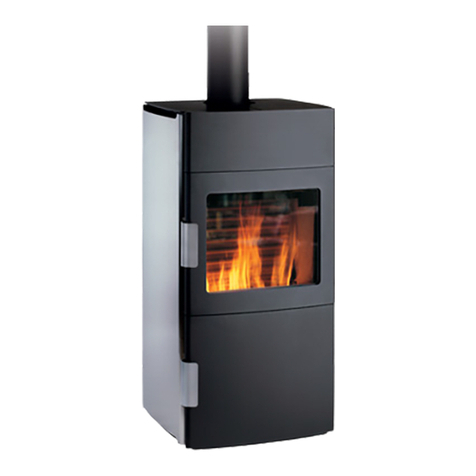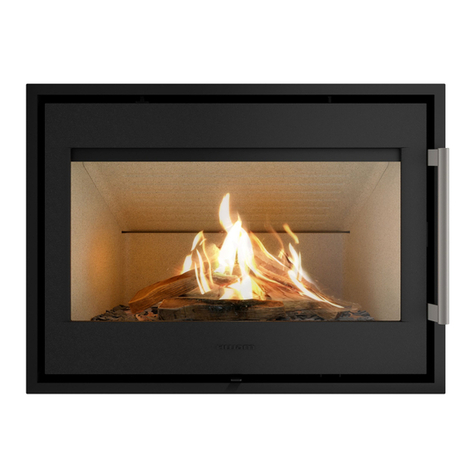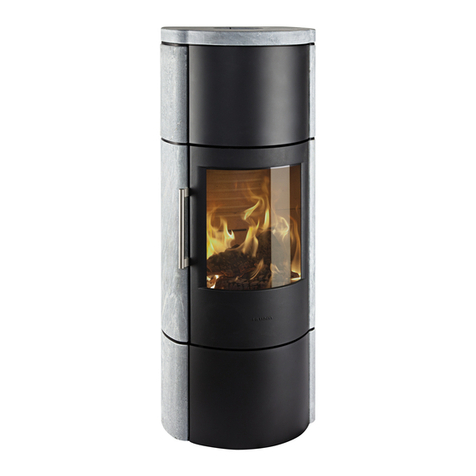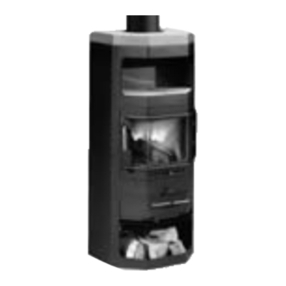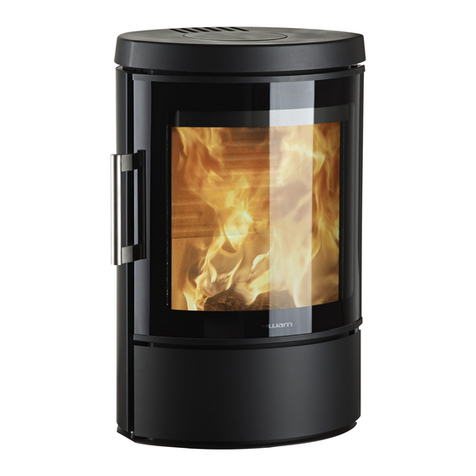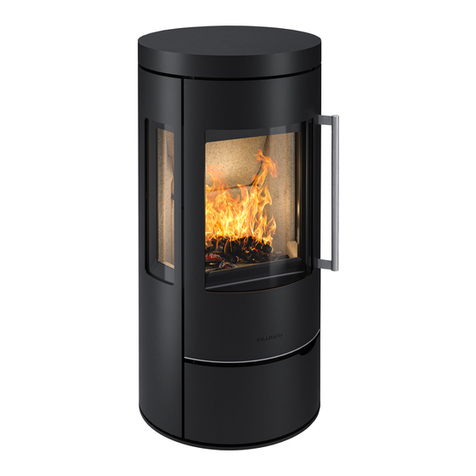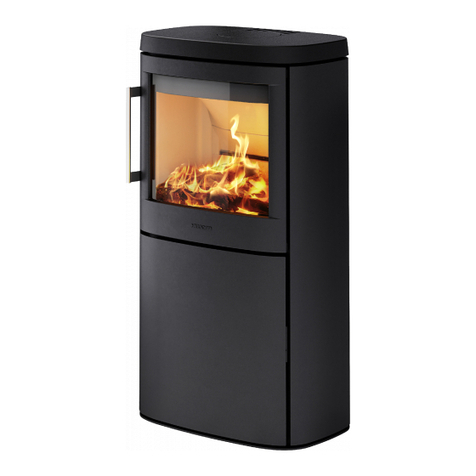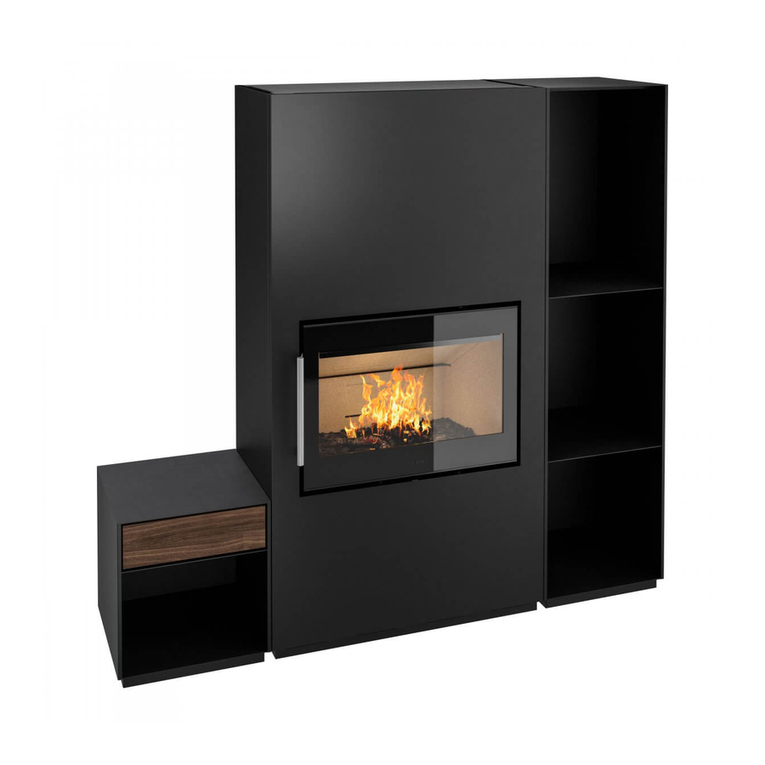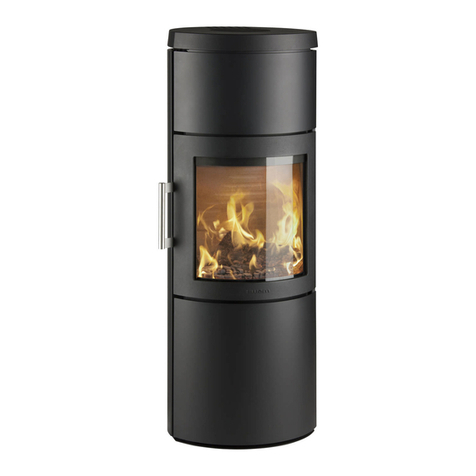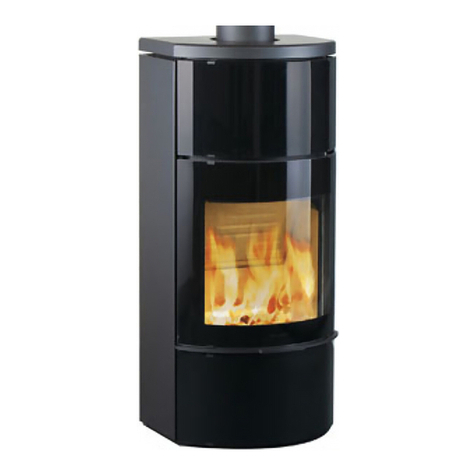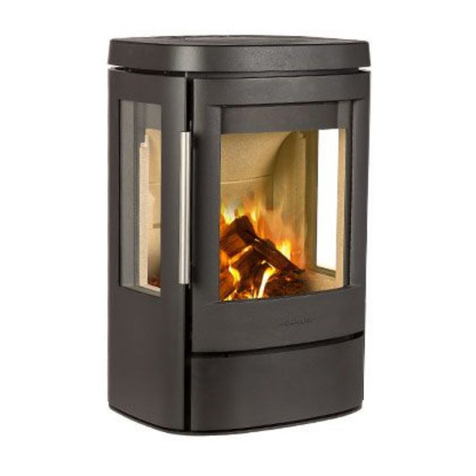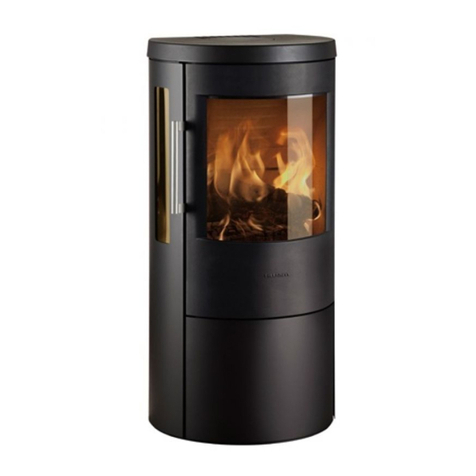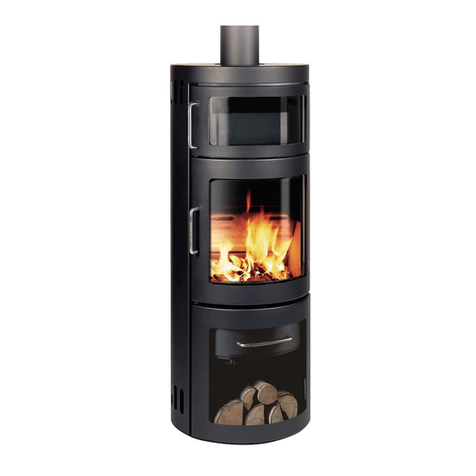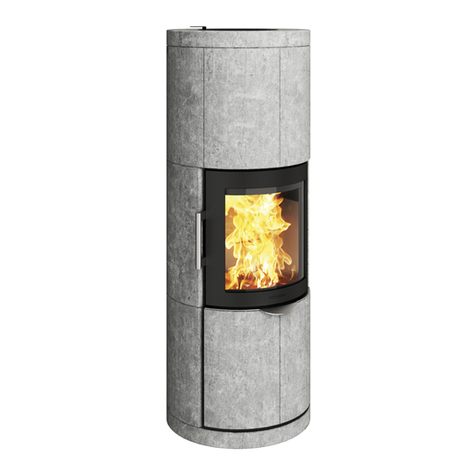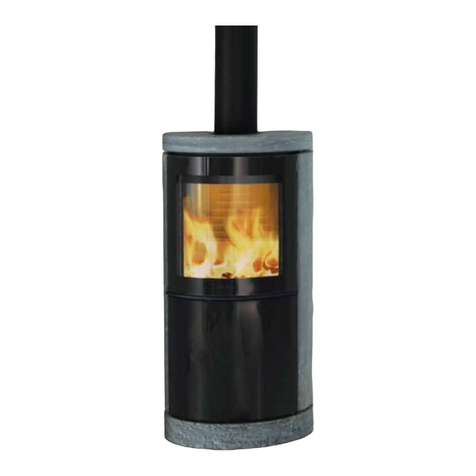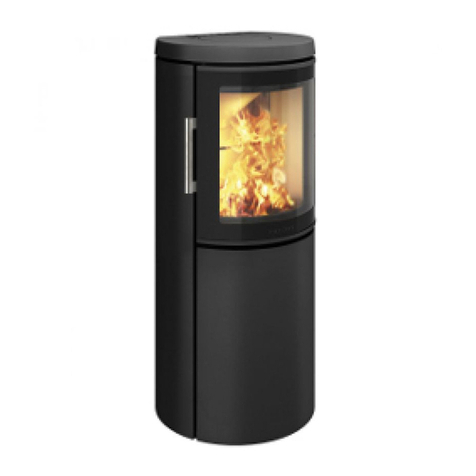
9
UPDATED 09/20/2013
Refer to the chimney connector manufacturer’s instructions concerning installation of listed connector
pipe, wall thimble and chimney.
Draft Requirements
HWAM 30/55 Wood Stove is only one component of the total system. The venting system is equally
importantforachievingtherequiredflowofcombustionairtothefireboxandforsafelyremovingunwanted
combustion by-products from the appliance. If the venting system’s design does not promote these
ends,thesystemmaynot functionproperly.Poorlyfunctioning ventingsystemsmaycreateperformance
problems as well as be a safety hazard (i.e. .an oversized chimney may result in less than optimum
performance. Installations into a large, masonry chimney may require a liner to improve performance).
A draft test should read greater than .04” W.C. (Inches Water Column) and less than 08” W.C.
The chimney draft depends on the weather conditions. In stormy weather, you may reduce the chimney
draft by closing the damper in the connector pipe (if a damper has been installed). If the chimney draft
is strong, the combustion air supply should also be reduced.
Chimney Installation
Donotconnectthisunittoachimneyflueservinganotherappliance.Donotconnecttoanyairdistribution
duct or system.
HWAM 30/55 Wood Stove is listed for installation as a vertically top or rear vented wood-burning stove
using a listed classA(UL103HT) for Canada (CAN/ULC-S629) factory built chimney exiting through the
ceiling/attic/roof.
The inside diameter of the chimney and connector pipe must not be smaller than 6” (152 cm) diameter.
Single wall 24 gauge MSG (0.58 - 0.71 mm) , this may be used in the room where the stove is installed,
follow the chimney manufacturer’s instruction for installation of chimney and chimney adapter. In
Canada, where passage through wall, or partition of combustible construction is desired, the installation
shall conform to CAN/CSA B365.
Factory Built Chimney
When a metal prefabricated chimney is used, the manufacturer’s installation instructions must be
followed. You must also purchase (from the same manufacturer) and install the ceiling support package
or wall pass-through and “T” section package, fire stops (where needed), insulation shield, roof flashing,
chimney cap, etc. Maintain the proper clearance to the structure as recommended by the manufacturer.
The chimney must be the required height above the roof or other obstructions for safety and proper
draft operation.
Masonry Chimney
EnsurethatamasonrychimneymeetstheminimumstandardsoftheNationalFireProtectionAssociation
(NFPA) by having it inspected by a professional. Make sure there are no cracks, loose mortar or
other signs of deterioration and blockage. Have the chimney cleaned before the stove is installed
and operated. When connecting the stove through a combustible wall to a masonry chimney, special
methods are needed. Refer to Combustible Wall Chimney Connector Pass-Throughs on the following
pages.






